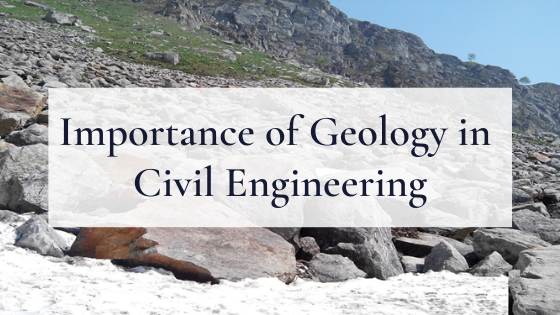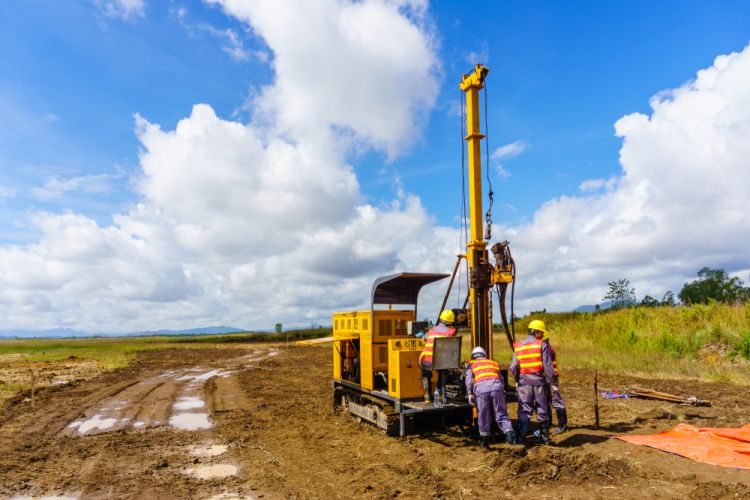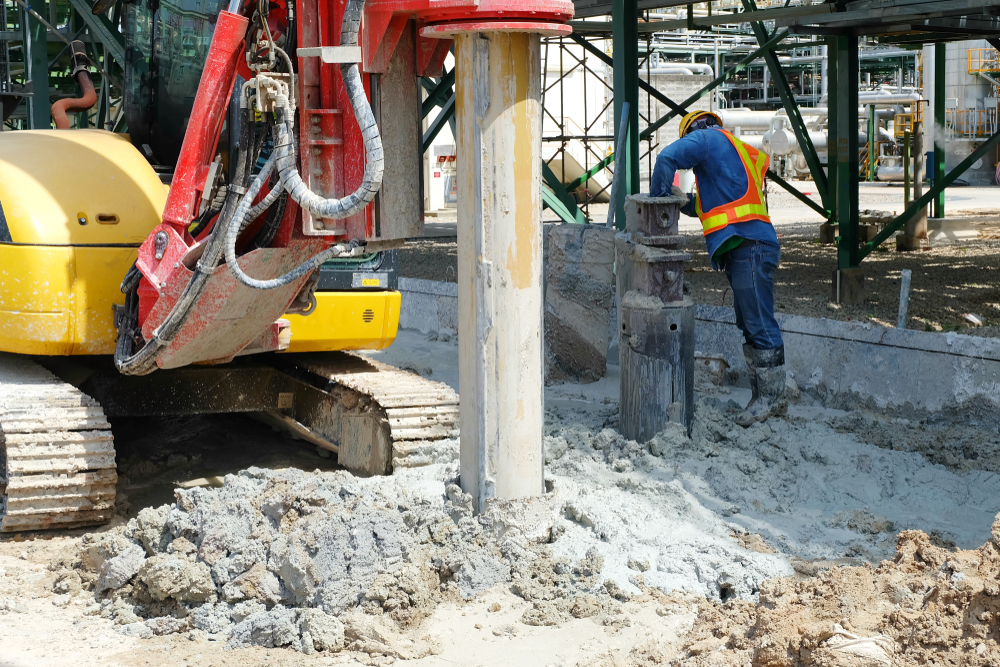6 Simple Techniques For Geotechnical Engineering For Construction Projects
The 8-Second Trick For Geotechnical Engineering For Construction Projects
Table of ContentsAn Unbiased View of Geotechnical Engineering For Construction ProjectsHow Geotechnical Engineering For Construction Projects can Save You Time, Stress, and Money.Some Of Geotechnical Engineering For Construction ProjectsNot known Details About Geotechnical Engineering For Construction Projects Geotechnical Engineering For Construction Projects Fundamentals ExplainedThe Ultimate Guide To Geotechnical Engineering For Construction ProjectsGeotechnical Engineering For Construction Projects Fundamentals Explained
Principles and Method of Ground Renovation. Ground Improvement Principles And Applications In Asia. Style evaluation in rock mechanics.Cengage Understanding, Stamford, 666 p. Atkinson, J., 2007. The mechanics of dirts and foundations. Taylor & Francis, N.Y., 442 p. Drifting Offshore Wind Generators: Feedbacks in a Sea state Pareto Ideal Layouts and Financial Assessment, P. Sclavounos et al., October 2007. Nicholson, D, Tse, C and Penny, C. (1999 ). The Observational Method in ground engineering concepts and applications.
The Ultimate Guide To Geotechnical Engineering For Construction Projects
Laboratory and area screening plays a vital role in this procedure. By drawing out samples from the planet's subsurface and using a suite of examinations, geotechnical engineers can anticipate the behaviour of dirt layers and examine their suitability for numerous building endeavours. The significance of geotechnical engineering in civil design can not be overstated, attributable to a number of elements: The first step in any kind of geotechnical study entails determining the dirt type at the building website.
Understanding these features makes sure that only ideal soil kinds are chosen for the advancement, consequently preventing possible structural failures. The foundation works as the bedrock of any type of building and construction project. Choosing the ideal foundation type is a choice that rests on the extensive analysis supplied by geotechnical design. This ensures the durability and stability of frameworks by suiting the loads they will bear.

Geotechnical site examination is an important action in the preparation and implementation of any kind of building and construction task. It entails the collection and evaluation of information related to the physical properties of soil and rock beneath a proposed building and construction website. This details is essential for the layout and building and construction of safe, steady, and sustainable frameworks.
The Greatest Guide To Geotechnical Engineering For Construction Projects
, also known as subsurface expedition, includes a series of tasks aimed at figuring out the soil, rock, and groundwater problems at a construction site. The primary goals are to identify prospective geotechnical threats, evaluate the design properties of subsurface products, and provide recommendations for the design and building of structures, preserving wall surfaces, and various other structures.
This may include geological maps, airborne photographs, previous investigation reports, and historic data. The workdesk study assists in recognizing potential geotechnical issues and planning the subsequent fieldwork. Complying with the desk research, a site reconnaissance is conducted to visually check the website and its surroundings. This includes observing the topography, drainage patterns, existing frameworks, greenery, and any indicators of instability or disintegration.
What Does Geotechnical Engineering For Construction Projects Mean?
Superficial test pits are excavated to directly observe and example the soil and rock. This method works for researching the upper layers of the subsurface and recognizing near-surface dangers. Non-invasive geophysical methods, such as seismic refraction, ground-penetrating radar (GPR), and electric resistivity tomography (ERT), are utilized to map subsurface conditions and identify anomalies.
Dirt and rock samples why not try these out accumulated throughout the area investigation are subjected to laboratory screening to establish their physical and mechanical buildings. These examinations give important information for geotechnical evaluation and design.
The main advantage of geotechnical website examination is guaranteeing the safety and security and stability of structures. By comprehending the subsurface problems, designers can make foundations and other structural aspects that can hold up against the loads and environmental pressures they will certainly undergo. This decreases the risk of settlement, subsidence, and structural failure.
Geotechnical Engineering For Construction Projects Can Be Fun For Everyone
This makes sure reliable and safe construction practices. Geotechnical site examinations are typically needed by constructing codes and laws.
This information is very useful for project supervisors, engineers, and contractors in establishing realistic schedules, budgets, and contingency plans. Geotechnical Engineering for Construction Projects. High-Rise Structure in a Coastal AreaIn a seaside city, a high-rise household structure was intended on a site with suspected loose sand down payments and a high water table. A thorough geotechnical investigation, consisting of borehole exploration, CPT, and geophysical surveys, was performed
How Geotechnical Engineering For Construction Projects can Save You Time, Stress, and Money.
Based on these searchings for, the structure design was modified to include deep pile structures prolonging right into steady strata, and ground enhancement methods, such as vibro-compaction, were carried out to minimize liquefaction threats. This aggressive technique made sure the security and security of the building while avoiding costly post-construction removal. Framework Growth on a Sloping TerrainA significant facilities project, entailing the building and construction of a freeway and bridges, was intended on an uneven terrain with high inclines.

The Leaning Tower of Pisa (Italy), an iconic building marvel, check my site is infamous for its unintended tilt from significant geotechnical concerns. The tower's structure was inadequately designed to take care of the soft, unstable soil underneath it, resulting in unequal negotiation and its unique lean. Our world is populated with outstanding framework projectsfrom towering high-rise buildings to sprawling bridgesall standing statement to the evolution of the numerous building equipment and methods available.
Geotechnical design is a specific area within civil engineering that concentrates on examining the actions of earth products. This branch delves deep right into the groundinvestigating how the soil, rock, and groundwater at a building site can influenceand be affected bythe infrastructure that we put up on and into them. Prior to a solitary brick is laid or a concrete structure put, geotechnical engineers probe right into the earthgathering important data concerning the site's soil make-up, rock framework, and groundwater degrees.
The 6-Second Trick For Geotechnical Engineering For Construction Projects

is a device made use of to evaluate the stability and load-bearing capacity of piles throughout installation, leveraging the principle of wave proliferation. It maximizes building and construction effectiveness by giving real-time assessments, hence guaranteeing safe and reliable heap structures. Among the practical applications of geotechnical engineering involves making a decision and executing the ideal approaches for structure building and construction.
Pile driving represents even more than the plain act of putting architectural components right into the ground. On the other hand, it is a meticulously coordinated process of transferring a structure's load past the much less secure soil layers more detailed to the surfacedown to the extra substantial strata that exist under. In the instance of heap driving, consider just how geotechnical designers adeptly utilize this strategy to equally disperse the framework's weight.